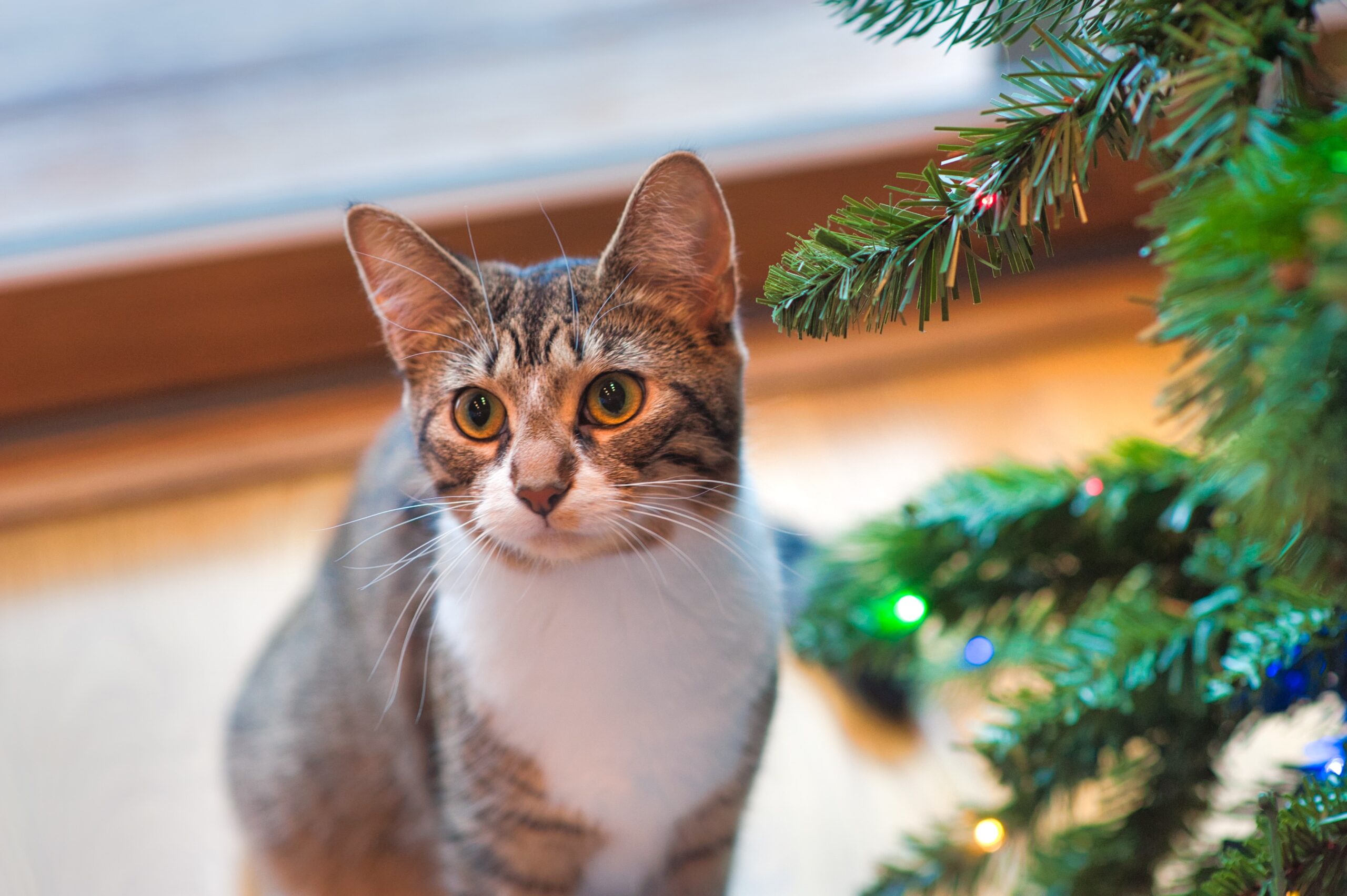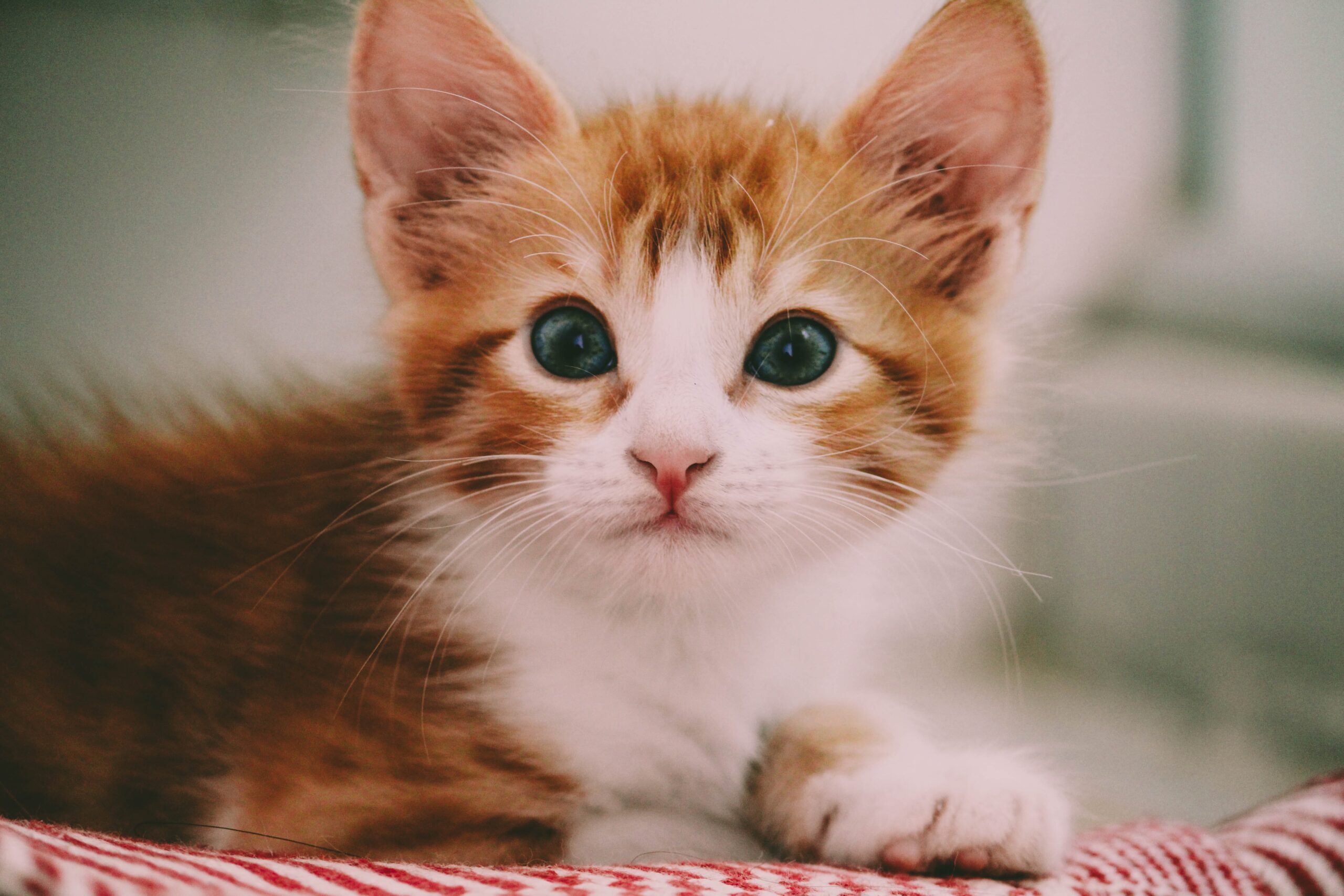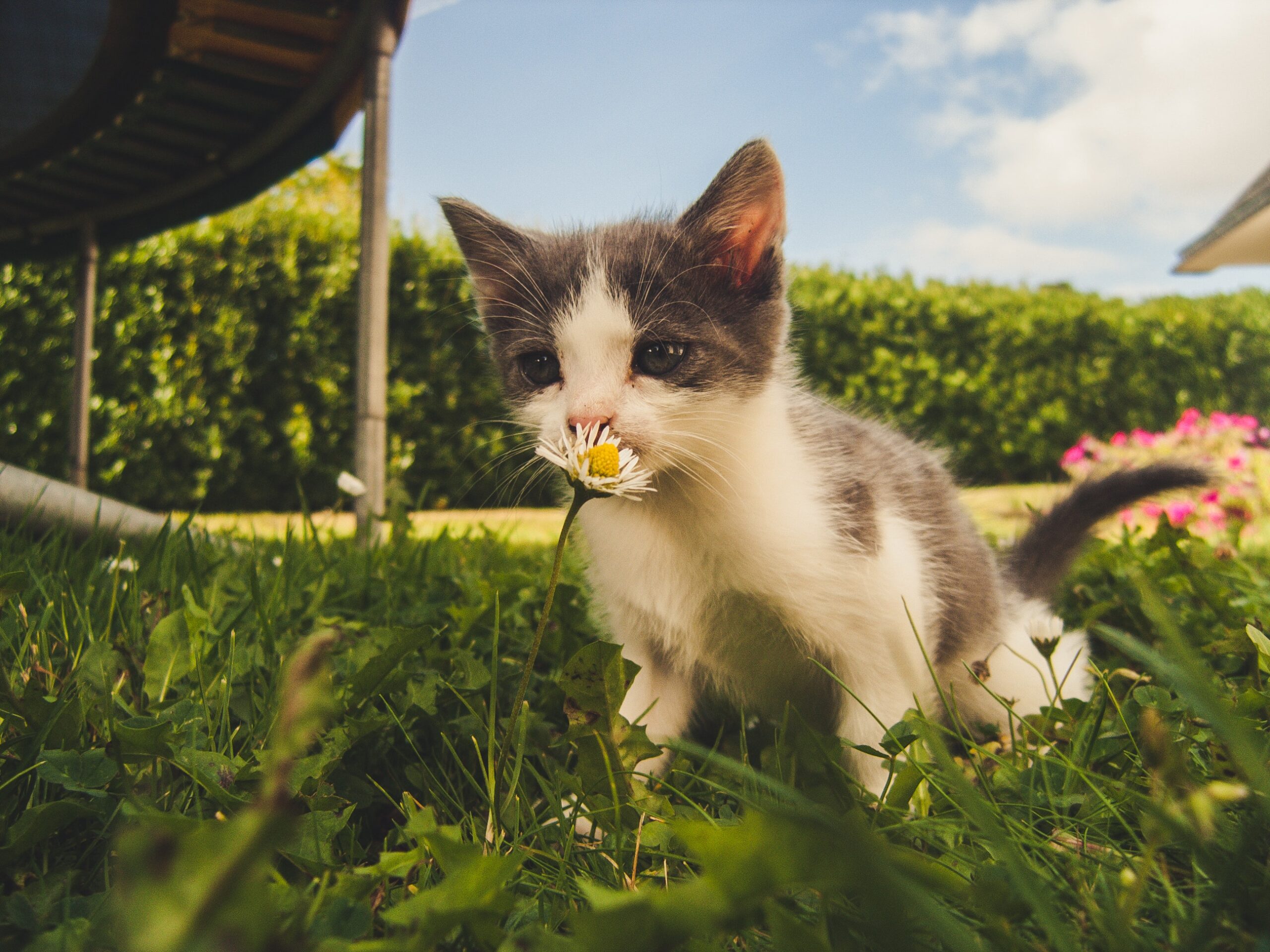The Growing Trend of Indoor Cat Gardens
In recent years, there has been a noticeable rise in the popularity of indoor cat gardens among cat owners worldwide. These captivating and carefully curated spaces offer a unique opportunity to bridge the gap between indoor living and a cat’s natural instincts. As more pet owners recognize the significance of a cat’s environment on their physical and mental well-being, the concept of indoor cat gardens has become a go-to solution for providing feline companions with an enriching and fulfilling life.
Enriching Your Indoor Cat’s Environment
While indoor cats enjoy the safety and comfort of being inside, their environment may lack the variety and stimulation that outdoor spaces can offer. Cats are natural explorers and hunters, and they thrive on mental and physical engagement. Creating an enriching indoor environment becomes crucial in ensuring their overall happiness, preventing boredom, and fostering their innate behaviors.
Natural Oasis of Indoor Gardens for Cats
An indoor cat garden serves as a natural oasis, bringing elements of the outdoors inside your home. By strategically integrating cat-friendly plants, interactive features, and cozy spaces, these gardens allow cats to engage their senses, mimic their outdoor experiences, and satisfy their curious nature. In this article, we will delve into the numerous benefits of indoor cat gardens and provide insights into how you can create a captivating and harmonious space for your beloved feline companion.
Understanding the Benefits of Indoor Cat Gardens
Physical and Mental Health Benefits
Indoor cat gardens offer a plethora of health advantages for our feline friends. By incorporating cat-friendly plants and interactive elements, such as climbing structures and hiding spots, these gardens encourage physical activity and exercise. Jumping, climbing, and exploring the garden space provide opportunities for muscle toning and weight management, which are crucial for indoor cats to stay fit and healthy. Moreover, the exposure to greenery and natural elements can have a calming effect on cats, contributing to their overall well-being and reducing the risk of obesity-related health issues.
Fulfilling Natural Instincts and Behaviors
Cats are innate hunters and explorers, and their curious nature leads them to explore the world around them. Indoor cat gardens provide an opportunity for cats to indulge in their hunting instincts, mimic their outdoor experiences, and engage their senses. Cat-friendly plants offer a chance for sensory exploration through smelling, rubbing against, and even nibbling on leaves. The presence of a cat garden fulfills their need for mental stimulation and satiates their curious desires, making them happier and more content in their indoor environment.
Reducing Stress and Anxiety
Indoor cats may experience stress and anxiety due to the limited and confined space they inhabit. The introduction of an indoor cat garden can significantly impact their emotional well-being. The soothing sight of greenery and the calming effect of natural surroundings can help reduce stress levels and promote relaxation in cats. The garden’s tranquil atmosphere provides a safe retreat where cats can escape from loud noises or other stress triggers, creating a peaceful sanctuary for them to unwind and recharge.
Indoor cat gardens offer a host of benefits, from promoting physical health and mental stimulation to providing a calming and stress-relieving environment. These natural oases are a wonderful way to enhance the lives of indoor cats, allowing them to thrive in a space that caters to their natural instincts and desires.
Selecting the Right Plants for Your Indoor Cat Garden
Cat-Safe Plant Selection
When creating an indoor cat garden, it is essential to prioritize the safety of your feline companion. Certain plants can be toxic to cats if ingested, so opt for cat-safe varieties to ensure your pet’s well-being. Some cat-friendly plants include spider plants, cat grass, mint, rosemary, and non-toxic varieties of ferns and succulents. Be sure to research each plant thoroughly or consult with a veterinarian to ensure they are safe for your furry friend.
Benefits of Different Plant Types
Incorporating a variety of plants in your cat garden can provide a diverse and enriching experience for your feline friend. Cat grass, like wheatgrass or oatgrass, appeals to cats’ natural grazing tendencies and aids in digestion. Herbs like catnip, valerian, and chamomile can serve as natural stimulants and calming agents, offering entertainment and relaxation for your cat. Climbing plants, such as cat-friendly ivy or Boston fern, can provide vertical space for your cat to explore and exercise its climbing instincts.
Low-Maintenance Plant Options
As indoor cat gardens are intended to be enjoyable for both cats and their owners, choosing low-maintenance plants can make the experience more manageable. Opt for plants that can thrive in indoor conditions with minimal care requirements, such as spider plants, pothos, or peace lilies. Additionally, consider using self-watering pots or incorporating a drip irrigation system to simplify watering tasks. Low-maintenance plants not only ensure the longevity of your garden but also make it easier to enjoy the benefits of the natural oasis you’ve created for your cat.
By carefully selecting cat-safe plants and incorporating a mix of different types, your indoor cat garden can become a safe and stimulating space for your feline companion. With the right plant choices, you can create a low-maintenance haven that enriches your cat’s environment while complementing your indoor living space.
Designing and Creating the Cat Garden
Choosing the Right Setup
When creating an indoor cat garden, the setup can vary based on your available space and your cat’s preferences. Window boxes are an excellent option for utilizing natural light, allowing your cat to bask in the sun while enjoying the garden. Shelves can be strategically placed near windows or on walls to create multi-level cat gardens that cater to your feline’s climbing instincts. Alternatively, you can dedicate a specific area in your home for the cat garden, using a corner or an unused space to set up a cozy oasis.
Designing a Cat-Friendly Layout
Designing a cat-friendly layout is key to maximizing your feline friend’s enjoyment and engagement in the garden. Place cat-safe plants at various heights to encourage exploration and play. Incorporate hiding spots or cozy nooks where your cat can relax and observe its surroundings. Use cat-friendly grasses or soft surfaces for lounging areas. Cats also enjoy vertical elements like scratching posts, cat trees, or wall-mounted shelves to exercise their natural climbing and scratching behaviors. By carefully considering your cat’s preferences and behaviors, you can design a garden that provides both entertainment and relaxation.
DIY Cat-Friendly Planters and Features
For a touch of creativity and personalization, consider DIY projects to enhance the cat garden. Create custom planters using safe materials like untreated wood, plastic, or ceramic. Vertical gardens made from repurposed materials can be an exciting way to save space while stimulating your cat’s curiosity. DIY cat toys and interactive features, such as dangling feathers or hidden treats among the plants, can add an element of surprise and fun to the garden. Just ensure that any DIY elements are safe and free from toxic substances.
Designing and creating an indoor cat garden is an opportunity to express your creativity while providing a delightful and enriching space for your beloved feline companion. Whether utilizing window boxes, shelves, or designated areas, focusing on cat-friendly design and incorporating DIY features will ensure a natural oasis that captures your cat’s curiosity and affection.
Maintaining the Indoor Cat Garden
Caring for the Plants
Proper care and maintenance are essential to keep the plants in your indoor cat garden healthy and thriving. Ensure that the plants receive the right amount of sunlight, water, and nutrients according to their specific needs. Some cat-safe plants, such as cat grass and catnip, may require regular pruning to encourage fresh growth. Regularly check for signs of pests or diseases and promptly address any issues to prevent them from spreading to other plants. If you’re uncertain about plant care, consider consulting with a local horticulturist or gardening expert for guidance.
Preventing Overeating and Damage
While indoor cat gardens are designed to provide enrichment for your feline friend, it’s essential to monitor their interactions with the plants. Some cats may be prone to overeating certain plants, which could lead to digestive issues. If you notice your cat excessively consuming a particular plant, consider limiting their access to it or providing alternatives. Additionally, provide other forms of enrichment, such as interactive toys or puzzle feeders, to keep your cat engaged and entertained without solely relying on the garden for stimulation. If your cat shows persistent interest in damaging the plants, using cat deterrent sprays or providing designated cat-safe toys can redirect their behavior.
Regular Cleaning and Monitoring
Regular cleaning and monitoring are crucial to maintain a safe and healthy environment for your cat. Remove any fallen leaves or debris from the garden to prevent accidental ingestion. Keep the area surrounding the plants tidy and free from potential hazards. Check the garden for any toxic plants or items that could be harmful to your cat and remove them promptly. As your cat explores and interacts with the garden, observe their behavior to ensure they are enjoying it safely. Be mindful of any changes in your cat’s health or behavior that may be linked to their interactions with the garden.
By staying diligent in caring for the plants, preventing overeating or damage, and regularly cleaning and monitoring the cat garden, you can create a safe and enjoyable space for your feline companion. A well-maintained indoor cat garden will continue to provide your cat with a natural oasis, promoting their physical and mental well-being for years to come.
Engaging Your Cat with the Indoor Garden
Interactive Toys and Play Activities
To encourage your cat’s active engagement with the indoor garden, incorporate interactive toys and play activities within the space. Toys like feather wands, catnip mice, and laser pointers can spark your cat’s hunting instincts and curiosity, making the garden a playground for exploration. Create hiding spots among the plants where you can hide treats or toys for your cat to discover during playtime. Interactive play not only provides physical exercise but also enhances the bond between you and your feline companion.
Interactive Feeding Methods
Make mealtime an enriching experience by using interactive feeding methods within the cat garden. Puzzle feeders and treat-dispensing toys can be placed among the plants, encouraging your cat to forage and “hunt” for their food, mimicking their natural hunting behaviors. This feeding approach engages both their body and mind, turning mealtime into an exciting and stimulating activity. Be sure to provide a balanced diet and adjust the portion sizes accordingly to prevent overfeeding.
Spending Quality Time Together
The indoor cat garden not only benefits your cat’s well-being but also presents an opportunity for you to bond and spend quality time together. Sit in the garden with your cat, observe their interactions with the plants, and join in the playtime. Engage in gentle petting and interactive play, creating a sense of trust and companionship between you and your feline friend. Your presence and interaction will enhance the garden’s appeal and make it an even more delightful space for your cat.
By introducing interactive toys and play activities, incorporating interactive feeding methods, and spending quality time together in the indoor garden, you can maximize the benefits of this natural oasis for your beloved cat. The garden will not only cater to their instincts and needs but also create cherished moments of joy and connection between you and your furry companion.
Safety Considerations and Precautions
Potential Hazards and Plant Safety
While indoor cat gardens offer numerous benefits, it’s essential to be aware of potential hazards certain plants may pose to your feline companion. Some common houseplants may be toxic to cats if ingested, leading to adverse reactions or health issues. Research and carefully select cat-safe plants to include in the garden, such as cat grass, spider plants, or catnip, which are non-toxic and enjoyable for your cat.
Alternative Options for Curious Cats
If you have a particularly curious or mischievous cat who may be prone to nibbling on plants, consider alternative options to ensure their safety. Utilize hanging planters, wall-mounted shelves, or elevated garden spaces to keep plants out of reach. Another option is to create a separate, designated play area for your cat away from the indoor garden. Fill this space with cat-friendly toys, scratching posts, and interactive activities to divert their attention from the plants.
Consulting with a Veterinarian
If you notice any unusual behavior or suspect your cat has ingested a potentially toxic plant, seek immediate veterinary advice. Early detection and treatment are vital in ensuring your cat’s well-being. Additionally, consult with your veterinarian before introducing any new plants to the indoor garden, especially if your cat has specific health conditions or allergies.
By being mindful of potential hazards, exploring alternative options, and seeking professional guidance when necessary, you can create a safe and enjoyable indoor garden environment for your beloved feline friend. With the right precautions in place, your cat can experience the benefits of the natural oasis while staying happy and healthy in their indoor habitat.
Conclusion
The concept of indoor cat gardens presents a wealth of benefits for our beloved feline companions. From promoting physical and mental health to fulfilling their natural instincts, these green havens create a sense of harmony and contentment for indoor cats. The positive impact on reducing stress and anxiety, as well as providing opportunities for interactive play and engagement, is truly remarkable.
As responsible and caring cat owners, providing a stimulating and enriching environment for our indoor cats is a wonderful opportunity. The joy of seeing our feline friends flourish amidst lush greenery and interactive play is a reward in itself. By setting up an indoor cat garden, we ensure that our cats lead fulfilling and happy lives, even within the confines of our homes.
Creating an indoor cat garden not only benefits our cats but also deepens the bond we share with them. By investing time and effort into their well-being and happiness, we forge a stronger and more loving connection with our feline friends. The memories of playful moments and peaceful coexistence in the garden become cherished highlights of our shared journey.
The advantages of indoor cat gardens are undeniable. Let us embrace this concept with open hearts and open spaces, inviting nature indoors to foster a serene and thriving environment for our indoor cats. With enriched lives and happier hearts, both cats and owners can revel in the beauty of a natural oasis where love and contentment bloom.










